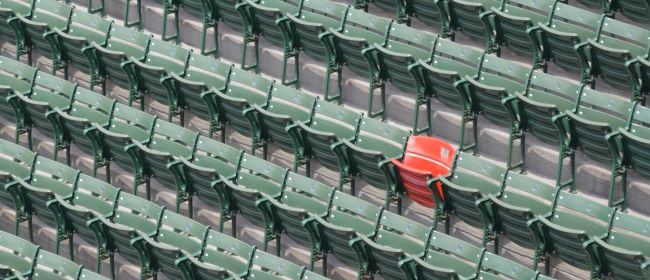
BS”D
Volume 33, No. 3
11 Marcheshvan 5779
October 20, 2018
Sponsored by
Harold and Gilla Saltzman
on the yahrzeit of his mother
Rebecca Saltzman
(Rivka Rachel bas Yehuda Leib a”h)
Our Parashah opens with Hashem commanding Avram (Avraham) to leave his land, his birthplace, and his family, and to travel to an unspecified destination. Interestingly, the Torah tells us nothing about what led up to this command. What kind of person was Avraham? How did Avraham come to be the person chosen by Hashem for a new mission?
R’ Yosef Ze’ev Lipovitz z”l (1886-1962; a leading student of the Alter of Slabodka z”l; Rosh Yeshiva in Tel Aviv) writes: Once we reflect on everything that Hashem asked Avraham to give up–homeland, birthplace, and family–and the fact that he did so without hesitation, we immediately see Avraham’s greatness. What could the Torah have told us that would reveal Avraham’s greatness more than this information does?
R’ Lipovitz continues: In the eyes of our Sages, Avraham’s past is not important because Hashem created him specifically for the mission that begins in our Parashah. The Midrash connects various phrases in the account of Creation to different historical eras. On the phrase, “Elokim said, ‘Let there be light’,” the Midrash comments: This was Avraham Avinu. With Avraham Avinu’s arrival on the scene, there was light in a dark world. Just as Hashem created light as a foundational element of the world, so He created Avraham. Avraham was not a Tzaddik like other Tzaddikim, whose good deeds need to be defined so we can understand who they are. Avraham was a unique creation, formed by Hashem and then uprooted from his past in order to carry out a mission. As Hashem said to the prophet Yechezkel (33:24), “Avraham was one, unique.” (Nachalat Yosef)
*******
“Hashem said to Avram, ‘Go for yourself from your land, from your relatives, and from your father’s house to the land that I will show you’.” (12:1)
The first phrase of Hashem’s words can also be translated, “Go to yourself.” R’ Moshe Alsheich z”l (1508–1593; Tzefat, Eretz Yisrael) explains: When a soul comes into this world, it remains attached to its source (“root”) in Heaven. In this way, a righteous person is always “attached” to Hashem. On the other hand, if a person sins, he creates a “wall” that separates his soul below from its source above. As a result, he becomes distanced from Hashem.
Likewise, R’ Alsheich continues, the soul of a person who dwells in Eretz Yisrael is more closely connected to its root than is the soul of a person who is in the Diaspora. In the Diaspora, the “air” is impure, and it forms a wall between the soul below and its source in Heaven. Thus, when Avraham was told to relocate to Eretz Yisrael, he was being told to go “to” himself, i.e., to get closer to the source of his soul. (Torat Moshe)
R’ Yoel Sirkes z”l (Poland; 1561-1640; known as the “Bach” after the initials of his Halachic work Bayit Chadash) writes: R’ Alsheich’s teaching that one who goes to Eretz Yisrael goes to the source of his soul is what Ruth referred to when she said to her mother-in-law, Naomi (Ruth 1:16), “Do not urge me to leave you, to turn back and not follow you, for wherever you go, I will go.” This, continues the Bach, is one of the six advantages of living in Eretz Yisrael compared to living in the Diaspora. The others are:
(2) When the Bet Hamikdash stood, the daily Tamid-offering atoned for everyday sins such as improper thoughts and Avak Lashon Ha’ra. Thus, no one in Eretz Yisrael ever went to sleep without having been cleansed of these sins. Ruth referred to this when she said, “Where you sleep, I will sleep.”
(3) In the Diaspora, Hashem relates to people through angels who serve as intermediaries. In Eretz Yisrael, we have a direct relationship with Hashem and can be called “Hashem’s People.” Thus Ruth said, “Your People are my People.”
(4) For the reason just stated, our Sages refer to one who lives in the Diaspora as having no Elokim, while one who lives in Eretz Yisrael has an Elokim. Ruth referred to this when she said, “Your Elokim is my Elokim.”
(5) When a person dies in the Diaspora, his soul has a more difficult time ascending to Heaven because it must traverse the impure “air.” About this Ruth said, “Where you die, I will die.”
(6) One who is buried in Eretz Yisrael is considered to be buried under Hashem’s “Throne” and will arise more easily at the time of Techiyat Ha’meitim. Thus Ruth said, “And there I will be buried.”
The Bach concludes: There are other advantages to living in Eretz Yisrael as well, as Ruth concluded: “Thus may Hashem do to me–and more!” (Meishiv Nefesh Al Megilat Ruth 1:16)
********
“When the officials of Pharaoh saw her [Sarah], they lauded her for Pharaoh, and [she] was taken to Pharaoh’s house.” (12:15)
The Zohar teaches that the Ten Plagues in Egypt parallel the Ten Tests that Avraham experienced. R’ Abdallah Someich z”l (1813-1889; Baghdad), writes that the fifth of Avraham’s tests, which parallels the fifth plague–Devver / pestilence–was Sarah’s being taken to Pharaoh.
He continues: Our Sages say that the Ten Plagues began on Rosh Chodesh Nissan and continued at the rate of one per month. If so, the fifth plague fell during the month of Av. That month, as we know, is not an auspicious time for the Jewish People. Rather, it is a month associated with G-d’s Harsh Judgment and, therefore, with tragedy. As a result, Bnei Yisrael were potentially in danger from this plague, but they were saved in the merit of Avraham’s passing this test. [R’ Someich explains why this specific test provided the necessary merit to overcome this specific plague.]
R’ Someich continues: This assumes that Sarah’s being taken to Pharaoh was, in fact, a test for Avraham. There is an opinion, however, that Avraham knew prophetically that no harm would come to Sarah; otherwise, he never would have put her at risk by going to Egypt. In that case, the precise merit necessary to overcome this specific plague was missing, which means that special kindness from Hashem was required to save Bnei Yisrael from the fifth plague (which occurred during the difficult month of Av). That is why, R’ Someich writes, the Torah takes pains to note that the Devver did not strike the flocks of Bnei Yisrael (see Shmot 9:4). (Haggadah Shel Pesach Kibbutz Chachamim p.113)
********
“Why do you say, Yaakov, and declare, Yisrael: ‘My way is hidden from Hashem, and my judgment has been passed over by my Elokim?’” (Yeshayah 40:26 — from the Haftarah)
R’ Saadiah Gaon z”l (882-942; Egypt, Eretz Yisrael and present-day Iraq; author of the earliest known work on Jewish Thought) writes: The prophet is rebuking the Jewish People for thinking that Hashem is not aware of our situation in the exile and that He is not judging us fairly. Rather, we are assured by the prophets that He will redeem us, either at the preordained time, or earlier if we repent. (Ha’Nivchar B’emunot V’de’ot 8:2)
********
Tehilim
Siddur Avodat Yisrael cites a custom to recite Psalm 110 on the Shabbat on which Parashat Lech Lecha is read. The Gemara (Nedarim 32b) interprets this chapter as referring to Avraham Avinu’s war against the Four Kings and his meeting afterwards with Malki Tzeddek, two events that are described in our Parashah.
********
The Bet Hamikdash
R’ Yehoshua Yosef Hakohen Feinberg z”l (19th century rabbi of Mard, Poland) asks: During the reigns of Kings Shaul and David, before the Bet Hamikdash was built, the Mishkan was located in one place (first, Nov; later, Givon) while the Aron / Ark was in a different place (first, Kiryat Yearim; later Yerushalayim). To which of those locations did the Mitzvah of Aliyah La’regel/ ascending for the festivals dictate that Jews go–to the place of the Aron or to the place of the Mishkan?
It appears, writes R’ Feinberg, that the Mitzvah is to go to the place of the Mishkan. The primary fulfillment of Aliyah La’regel is through offering sacrifices, and that has to be at the place where the Mizbei’ach / Altar is located, i.e., the Mishkan. True, R’ Feinberg notes, before the Bet Ha’mikdash was built, sacrifices could have been offered anywhere, even in a person’s backyard. Nevertheless, we see that G-d-fearing, meticulous people brought their sacrifices to the Mishkan. Thus, we read (Melachim I 3:4), “The King [Shlomo] went to Givon to sacrifice there, for that was the great Bamah / Altar.” [This was before Shlomo built the Bet Hamikdash.] Why didn’t King Shlomo offer sacrifices in Yerushalayim, where he lived and where the Aron was housed? This proves that the primary place for offering sacrifices was on the public Mizbei’ach in the Mishkan. While we do read that King David offered sacrifices in Yerushalayim rather than traveling to Givon, it is clear from the verses that he was ill and weak at that time. Overall, the Mishkan seems to take precedence over the Aron.
In reality, R’ Feinberg concludes, the above might not answer our original question. Some commentaries state that there were two Aronot / Arks, one for the second set of Luchot that Moshe brought down from Har Sinai and the other holding the broken remains of the first set of Luchot. Thus, there may have been an Aron in the Mishkan the entire time, even though the “main” Aron was elsewhere. Also, even if there were not two Aronot, a Midrash records that, when the Plishtim captured the Aron in battle, the future King Shaul wrested the Luchot from them. Thus, the Aron in Kiryat Ye’arim and Yerushalayim may have been empty, while the Luchot themselves may have been in the same place as the Mishkan. (Ezrat Kohanim)


